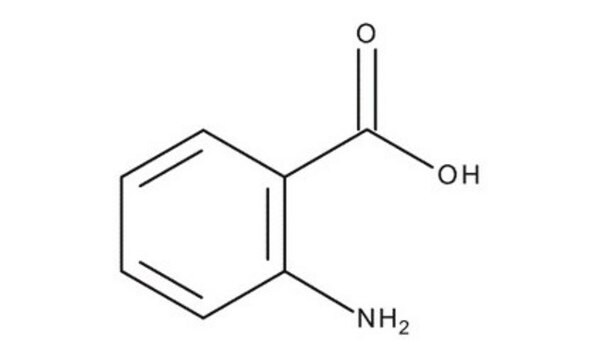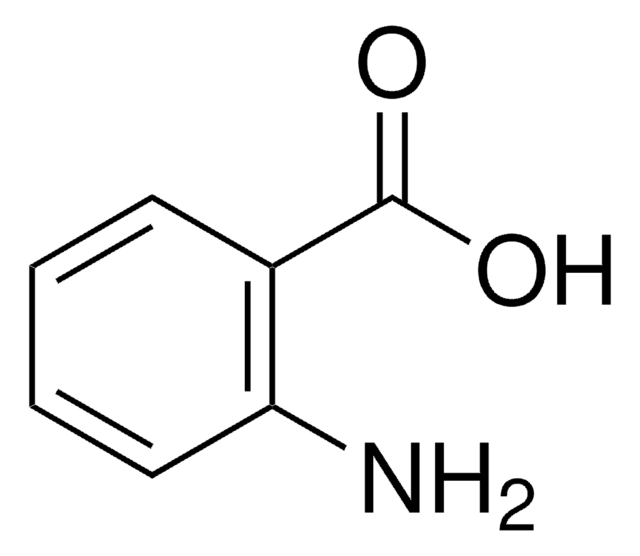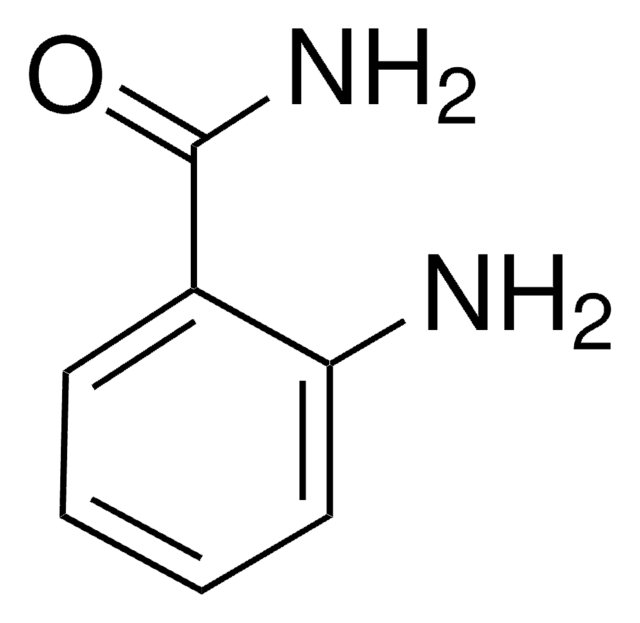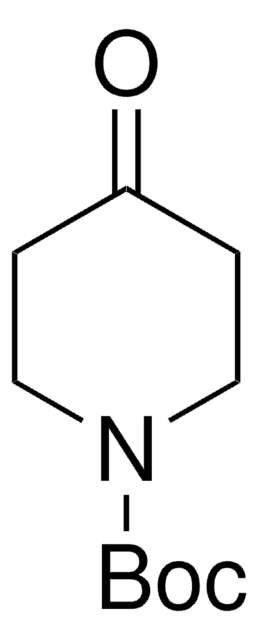A89855
Anthranilic acid
reagent grade, ≥98%
Synonym(s):
2-AA, 2-Aminobenzoic acid
About This Item
Recommended Products
grade
reagent grade
Quality Level
vapor density
4.7 (vs air)
Assay
≥98%
form
powder
mp
144-148 °C (lit.)
functional group
carboxylic acid
SMILES string
Nc1ccccc1C(O)=O
InChI
1S/C7H7NO2/c8-6-4-2-1-3-5(6)7(9)10/h1-4H,8H2,(H,9,10)
InChI key
RWZYAGGXGHYGMB-UHFFFAOYSA-N
Looking for similar products? Visit Product Comparison Guide
Related Categories
General description
Application
related product
Signal Word
Danger
Hazard Statements
Precautionary Statements
Hazard Classifications
Eye Dam. 1
Storage Class Code
11 - Combustible Solids
WGK
WGK 1
Flash Point(F)
302.0 °F - closed cup
Flash Point(C)
150 °C - closed cup
Personal Protective Equipment
Regulatory Listings
Regulatory Listings are mainly provided for chemical products. Only limited information can be provided here for non-chemical products. No entry means none of the components are listed. It is the user’s obligation to ensure the safe and legal use of the product.
JAN Code
A89855-25KG:
A89855-500G:
A89855-100G:
A89855-25G:
A89855-5MG:
A89855-VAR:
A89855-2KG:
A89855-BULK:
Choose from one of the most recent versions:
Already Own This Product?
Find documentation for the products that you have recently purchased in the Document Library.
Protocols
Mass Spectrometry of Glycans
Our team of scientists has experience in all areas of research including Life Science, Material Science, Chemical Synthesis, Chromatography, Analytical and many others.
Contact Technical Service









